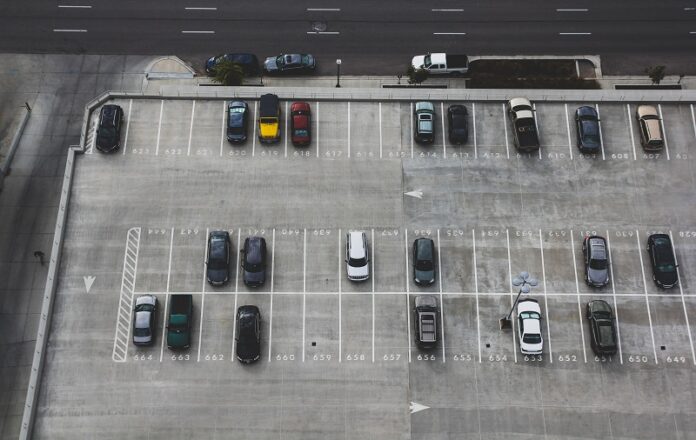A skyrocketing increase in vehicular ownership made parking a task that requires time and resources. Most drivers deal with the stress of circling multiple times the same area before finding a coveted parking spot. Often, they have no other choice than parking far away and walking to their destination. But is there a solution to such a stressful issue? Everyone talks about how to make cities smarter in today’s age, but the entire process should start with creating smart parking. Technology has reshaped all industries, so why wouldn’t it improve the mobility sector? Innovation has touched all mobility industry areas, from smart motorways to electric cars and autonomous vehicles. And parking makes no exception. The parking industry is slowly becoming a hub of modernization.
To help people drive and park without hassle, assistive technology, and mainly IoT applications have come up with solutions. Read more to discover the way smart technology revolutionizes parking.
Smart parking and its innovations
Smart parking combines a series of technologies (machine learning, AI, IoT) to identify and report parking spaces available to drivers in real-time. A central system gathers information from multiple sensors embedded in parking lots to create a map with available parking spaces. Drivers use their smartphones to access an app that shows them where is the closest available parking spot. Traffic law enforcement authorities also use smart parking technologies to monitor traffic and identify law violations. Finding parking can be especially difficult in larger cities, such as San Francisco as an example. Booking monthly parking in San Francisco in advance can remove further stress associated with parking, as you will have a peace of mind, knowing your reserved spot is waiting for you.
How does smart parking improve the mobility sector?
Real-time parking maps are already a reality in many cities, but many other innovations revolutionize the parking sector.
Tracking sensors – vehicle tracking systems use OBD sensors and GPD technology to collect vehicles’ information and determine the parking space occupancy rate. A network server analyzes data and shares it in a readable format with app managers and users. IoT stays at the base of vehicle tracking sensors, but developers created these tech solutions to be used at a large scale by companies that manage fleets.
Automated parking – automated parking systems move cars up and down inside a multi-story parking building. Because the entire system is automated, the parking space doesn’t imply space for drivers to get in or out of the car, so they take less room. Automatic parking reduces the land used for parking spots and maximizes the use of available space. Also, automated parking systems provide limited access only for users with a subscription to the system, so they’re safer than public parking. But technology also implies the use of resources because ventilation is required to run the parking lot.
Parking counter – this system detects the cars entering and exiting the parking space to provide drivers with a real-time statistic of available spots. The software is connected to a central system that updates the information in real-time and allows managers to predict peak times, determine patterns and trends, and improve the efficiency of the space they run.
Safety controls – IoT provides solutions that reinforce traffic compliance. The parking facility features a network of sensors connected to data processing algorithms that identify parking violations and capture visual evidence. The system automatically notifies the offenders and issues parking tickets.
Is IoT important for parking software technologies?
Smart parking has a tremendous impact on everyone, from drivers to stakeholders. Individuals can easily book a parking space so they can plan trips without worrying about lot occupancy. Reinforcement law officers can also use technology to detect and evaluate traffic crimes’ gravity and take measures in seconds.
Smart technology allows parking facility managers to optimize their resources and use of space and create effective strategies for further developing parking lots. But parking technology wouldn’t provide all these benefits if it wouldn’t base its features on IoT. IoT facilitates parking solutions and allows community leaders to come up with strategies that improve their residents’ comfort.
Here is a list of additional benefits IoT offers in the mobility industry.
Sponsored meter time extension. Apps and other software tools notify drivers when their parking meter is about to expire so they won’t violate any regulation and risk fees. The tool asks the user if they want to extend the parking time duration and if they agree, it does it automatically with one click as the driver already provided payment data. Automated parking meter time extension apps lower the number of traffic violations and boost the parking facility’s revenue.
Innovative parking solutions that focus on the safety of the parking lot. People using an app or platform to find an available parking spot can also identify the red zones like parking lots for handicapped individuals, passenger loading-unloading zones, and bus stops. The app notifies the driver if they park in one of the red zones, so they avoid performing a parking violation. When the driver still leaves the vehicle in a no-parking zone, the app instantly notifies the reinforcement law department about the crime and increases the chances of penalizing traffic violations.
Efficient urban parking space use. Automated systems allow parking managers to collect occupancy data from all parking venues, thanks to a network of connected sensors. When local authorities want to disperse the number of parked vehicles equally around the town, they can modify the allowed parking time, and meter rates with the help of the information IoT systems offer.
IoT is the one factor that unites stakeholders, drivers, parking facility managers, and law enforcement organizations into a cooperative network. Everyone impacted by parking issues can collaborate, ask, answer questions, and provide feedback on boosting the urban community’s comfort.
With the increase in the number of vehicles driving on urban roads, smart infrastructure is higher than ever. Statistics show that by 2035 there will be two billion cars driving around. Smart parking technology helps drivers fulfill their needs without compromising on comfort.
The bottom line is that getting real-time access to information is the first step into revolutionizing the industry.






![SIMS 4 Download Free For PC Full Version 2019 [UPDATED] SIMS 4 Download](https://www.geniustechie.com/wp-content/uploads/2019/03/SIMS-4-Download-100x70.jpg)


